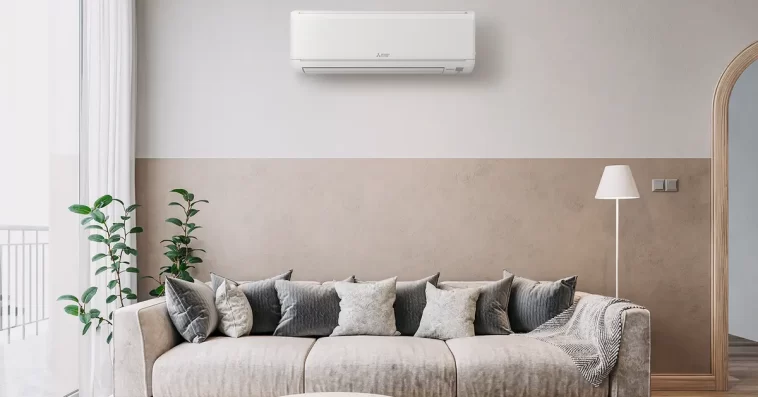If you find yourself inquiring about the optimal Seasonal Energy Efficiency Ratio (SEER) rating for a mini split system, you’re in luck. This article aims to address your queries and provide an in-depth understanding of SEER ratings, from their significance to their calculation. Whether you’re seeking knowledge or planning a purchase, read on to gain a comprehensive grasp of SEER ratings and their implications.
Understanding SEER Ratings
The SEER rating is a fundamental metric used to gauge the efficiency of air conditioning systems, particularly in terms of cooling output relative to energy consumption. This ratio signifies the energy efficiency of a system over a typical cooling season, providing valuable insights into how efficiently it operates.

SEER is pivotal in assessing potential cost savings on utility bills, alongside factors like home size, electricity rates, and cooling expenses. Higher SEER ratings correspond to more energy-efficient systems, resulting in reduced energy consumption and subsequently lower utility costs.
Pros And Cons Of Higher SEER Ratings
Embracing higher SEER-rated units entails both advantages and drawbacks, as is customary with various home improvement decisions. The following outlines the pros and cons of opting for systems with elevated SEER ratings:
Pros
- Enhanced Energy Efficiency: Higher SEER ratings equate to more energy-efficient units. Prioritizing energy efficiency not only benefits your finances but also has a positive impact on the environment by curbing energy consumption and resource utilization.
- Reduced Operating Noise: Systems with higher SEER ratings are generally quieter due to advanced variable-speed compressors and quieter fans. This contributes to a more serene living environment.
Cons
- Initial Costs: Acquiring units with higher SEER ratings comes with a higher upfront cost. These systems often feature costlier components, including efficient fan motors and compressors, contributing to their elevated price tags.
Determining The Ideal SEER Rating For Mini Splits

In May 2021, the U.S. Department of Energy (DOE) introduced updated minimum efficiency standards for split system air conditioners, encompassing mini splits. These standards reflect the DOE’s ongoing commitment to reducing overall energy consumption in the United States.
For regions with hotter summer climates, such as Southern states, the minimum SEER requirement was raised from 14.0 to 15.0. Conversely, Northern states, where air conditioning usage is less frequent due to cooler summer temperatures, saw the minimum requirement rise from 13.0 to 14.0 SEER.
Given these regulations, any mini split system surpassing the minimum SEER requirement is deemed commendable. Moreover, advancements in technology have led to a multitude of options surpassing these minimum thresholds.
Calculating SEER Ratings
While calculating SEER ratings involves mathematical equations, manufacturers typically provide this information, rendering calculations unnecessary for consumers. Various methods to access SEER ratings include:
- Manufacturer’s Sticker: SEER ratings are often displayed on the unit’s condenser, featuring a yellow and black sticker showcasing the system’s efficiency.
- Attached Information Sheet: The interior air handler typically contains an information sheet detailing the SEER rating.
- Building Permits: Cooling systems’ building permits frequently include SEER ratings.
- Model and Serial Numbers: Reach out to the manufacturer for SEER rating details using the system’s model and serial numbers.
Estimating Annual Operating Costs With SEER Ratings
Calculating the estimated annual operating cost involves multiplying the unit’s SEER rating by the cost of electricity and then by the average cooling season duration (usually 1,000 hours). As an example, consider the following computations for a 20,000 BTU mini split unit in Miami, Florida:
- 14 SEER: $194.91
- 16 SEER: $170.55
- 18 SEER: $151.60
- 20 SEER: $136.44
The results illustrate that higher SEER ratings correspond to lower annual operating costs, demonstrating the long-term cost-effectiveness of investing in higher-rated systems.
Maximizing Savings With SEER Ratings
Opting for a higher SEER-rated mini split system can yield significant savings. For instance, a shift from 14 SEER to 18 SEER leads to 28.6% electricity savings, while a transition from 14 SEER to 20 SEER results in 42.9% electricity savings.

In Conclusion
selecting a mini split system with an appropriate SEER rating involves a balance between upfront costs and long-term savings. By opting for higher SEER-rated units, you not only contribute to energy conservation but also experience substantial reductions in annual operating expenses. When considering a mini split purchase, always factor in SEER ratings to make an informed decision that aligns with your budget and energy efficiency goals.






GIPHY App Key not set. Please check settings